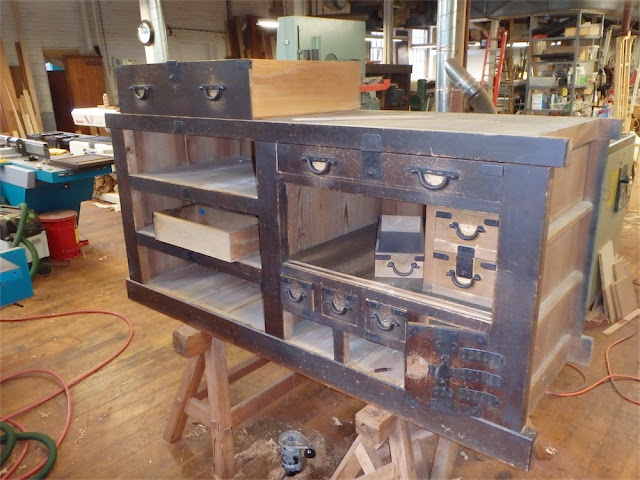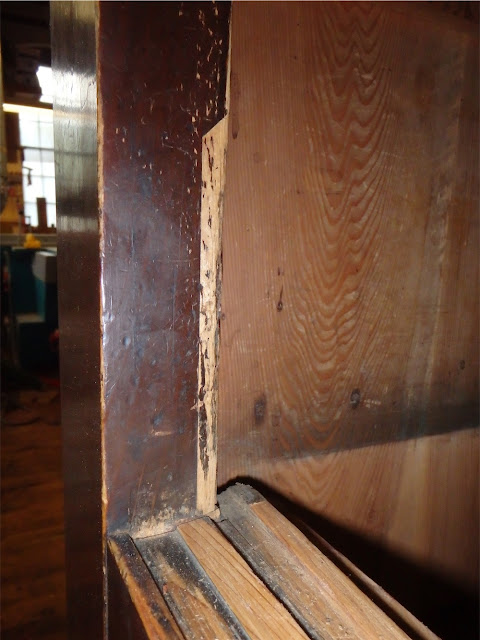Wrapping up my work on the two tansu from the Boston Children’s Museum. Here, I am taking a look at one of the large drawers:
I had been checking it out and noticed a few odd things, so I got my framing square out to have a look-see to confirm my suspicions.
This side of the box is decently close to square:
The other side however is not especially square:
That gap is about ½" at the end of the framing square:
Wayyy out of square. Can only be a manufacturing issue really.
The floor panel has definitely shrunk, and not evenly, shearing off a bunch of the kikugi:
Anyway, though it’s a little odd how it is only way out of square on one side but not the other, and the drawer is closer to a trapezoid than a square, it fits okay into the drawer opening so no further steps were taken beyond re-affixing the floor to the drawer walls. To correct the drawer into squareness would have meant taking it completely apart and remanufacturing the rear wall.
Here’s a detail shot showing the joinery used where the drawer side wall meets the rear wall:
The mizuya-dansu is ready to go back to the Museum:
Another view:
As you can see, I’ve cleaned it up a bit, but still left plenty of evidence of its wear and tear over the years. The original finish itself is somewhat variegated, some places lighter or darker, some places smooth, some scuffed, and has been modified and re-stained over the years in past repair efforts, so it was not really possible to match the finish perfectly. There was no mandate to completely refinish the cabinet, just repair them to make them functional and so that they were not getting damaged any further from the worn out sliding door tracks. I did attend to a few other issues while repairing those tracks, but mostly I stuck to the project brief.
The living room cabinet is also nearly done:
I found that the boxes did not sit flat to one another when connected. The upper cabinet teeters on two diagonal corners, so I have clamped it flat for the moment at tow corners to see if it draws it back.
As I have not removed the rear or side walls of either cabinet, I cannot see where my repairs could have caused either cabinet to become twisted. I am unsure as to whether the cabinets were originally a good fit to one another or not, or whether something may have occurred in transit or in repair work. It’s a little puzzling, but not a huge issue to resolve. The clamps easily brought the halves together. I’ll have another look at it in the next few days and see what can be sorted out.
Another view:
That concludes this side trip into tansu repair. Thanks for following along, and look for more posts in the ‘Ming-Inspired Cabinet’ thread soon enough.
Thanks for visiting the Carpentry Way.
via Tumblr http://davidpires578.tumblr.com/post/151165142384


























































